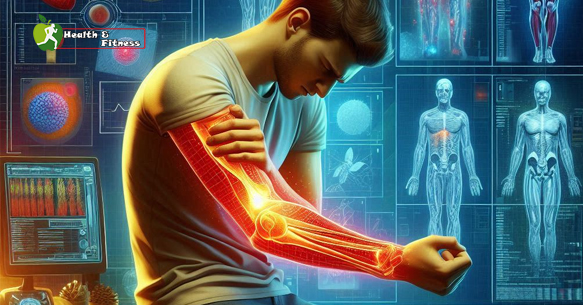Ever felt a sudden Left Shoulder Pain ? It’s easy to start worrying, isn’t it? Many people immediately fear a heart attack. But, not all left arm pain means something serious. Understanding what’s happening is key.
ICD-10 codes are very important in healthcare. They help doctors keep accurate records. They also help with insurance claims. These codes make sure everyone is on the same page. Let’s explore left arm pain and what these codes mean for you.
Understanding ICD-10 Codes for Left Arm Pain
ICD-10 codes are used daily. What exactly are they? They help classify different diagnoses. This ensures proper medical billing. Also, it is used to make sure records are accurate.
What are ICD-10 Codes?
ICD-10 stands for the International Classification of Diseases, 10th Revision. This is a system used worldwide. Healthcare pros use it to classify and code diagnoses, symptoms, and procedures. Think of it as a universal language. This language helps doctors, hospitals, and insurance companies communicate effectively. An ICD-10 code is alphanumeric. It starts with a letter, followed by numbers and sometimes more letters.
ICD-10 Codes Related to Left Arm Pain
Several ICD-10 codes relate to left arm pain. Here are a few common examples:
- M79.606 (Pain in left arm): This is a general code. It is used when the specific cause of the pain is not yet known.
- M25.51 (Pain in shoulder): Sometimes, shoulder problems radiate down the arm. This can feel like left arm pain.
- I77.1 (Stricture of artery): This code addresses artery narrowing.
These codes assist in the diagnosis process. They help healthcare providers plan the right treatment.
Common Causes of Left Arm Pain
Left arm pain has many possible reasons. Some aren’t serious. Some need immediate attention. Let’s look at some common causes. It is important to know the differences between heart-related issues and other problems.
Musculoskeletal Issues
Muscle strains, tendonitis, and arthritis cause pain. These issues are common. Rotator cuff injuries are one example. Tennis elbow can affect the left arm too.
Here’s a tip: Simple stretches ease minor muscle strain. Gentle movements can do wonders.
Nerve-Related Pain
Nerve compression is another cause. Carpal tunnel syndrome is a common one. Thoracic outlet syndrome and cervical radiculopathy can create pain. These conditions affect nerves in the neck and shoulder. Symptoms often show up in the left arm.
Cardiac-Related Pain
Left arm pain can signal heart problems. Angina and heart attacks are serious. Cardiac-related pain often feels crushing. It can start in the chest and run down the left arm. Shortness of breath and nausea are other symptoms.
If you think you’re having a heart attack, get help right away. Don’t wait. Quick action can save lives.

Diagnosing Left Arm Pain
How do doctors find the reason for your arm pain? They use different tools and tests. This helps them find what’s wrong. Let’s look at the process.
Physical Examination and Medical History
A full exam is essential. The doctor will ask about your health history. They’ll check your arm’s movement. They might test your reflexes. They’ll also check if you can feel things normally. All this offers clues to what’s going on.
Imaging and Diagnostic Tests
Imaging techniques give a clear picture. X-rays can show bone issues. MRI scans look at soft tissues. CT scans can offer more detail. Nerve conduction studies (NCS) check nerve function. Cardiac tests, like ECGs and stress tests, rule out heart issues.
Treatment Options for Left Arm Pain
How can you ease left arm pain? Treatment depends on the cause. It could include medicine, therapy, or surgery.
Conservative Treatments
RICE is often the first step. Rest, ice, compression, and elevation help. Over-the-counter pain relievers can make a difference. Physical therapy can improve strength and movement.
Medical Interventions
Doctors sometimes prescribe stronger medicines. These could include muscle relaxants. Corticosteroid injections might lower inflammation.
Surgical Options
Severe cases may need surgery. Carpal tunnel release is an example. Surgery can fix rotator cuff tears. It also helps with nerve compression.
When to Seek Immediate Medical Attention
Some symptoms call for fast action. Knowing when to act is crucial.
Warning Signs
Chest pain with left arm pain is a red flag. It may indicate a heart attack. Shortness of breath, sweating, nausea, and dizziness are other warning signs. Sudden, severe pain means you should seek help. Loss of arm function also requires prompt care.
If in doubt, get checked out. Don’t wait if you are concerned.
Conclusion
Understanding ICD-10 codes helps. Knowing the common causes of left arm pain is helpful. Proper diagnosis is key to relief. Many treatments are available. Seek help if you’re worried. You can improve your quality of life with the right care.



9 Comments
Başakşehir su kaçağı tespiti İlk kez bu kadar hızlı bir hizmet aldım, tavsiye ederim! http://brownbottlemke.com/author/superyarak/page/2/
80vphn
u25h29
s6zqaw
86ir5u
rwcy6e
at23u3
Thanks , I’ve recently been looking for info about this topic for ages and yours is the greatest I’ve discovered so far. But, what about the conclusion? Are you sure about the source?
4tm6co